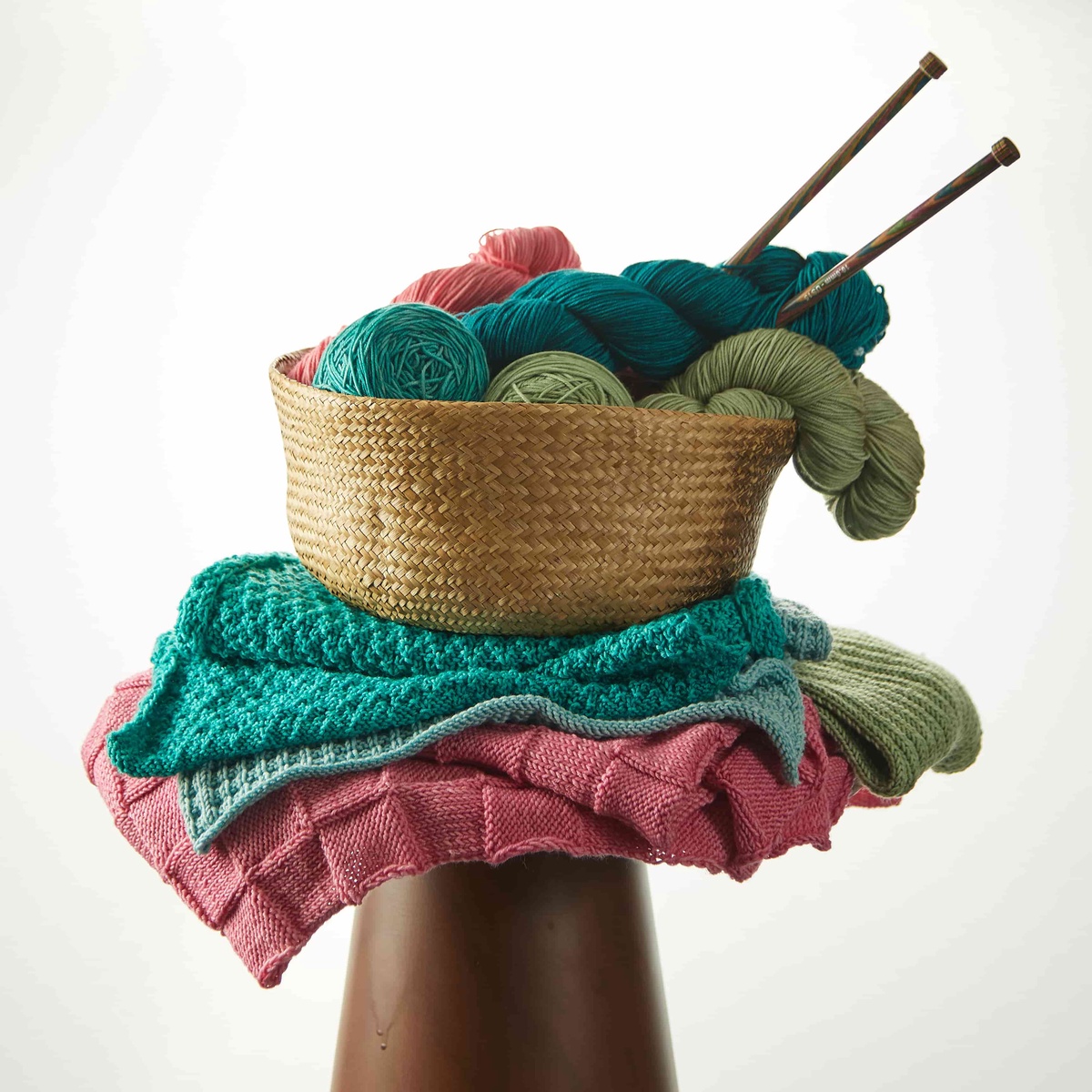So, you're interested in learning how to double-knit a blanket? That's awesome! Double knitting is a technique that allows you to create a reversible fabric with two layers so your blanket will look stunning from both sides, resulting in a thicker and heavier blanket, perfect for those chilly nights when you need extra warmth and comfort. So why not grab your best knitting needles and create your very own reversible blanket?
Let's get into the nitty-gritty of knitting your double blanket
For this technique, you'll need circular needles. They are fantastic for larger projects as they hold a greater number of stitches comfortably on a long cable length. This will give you enough room to accommodate all those stitches without feeling cramped. So, if you're a beginner looking to invest in versatile knitting needles, these would be your best bet.
How do you begin with the double-knit blanket?
Cast on an even number of stitches using both strands of your chosen yarn, evenly distributing them on your knitting needles. You'll work in pairs once you have your stitches set up. For instance, if your first stitch is in color A, the stitch next to it will be its counterpart in color B. Throughout the pattern, you'll knit color A on one side and color B on the other, switching between them as you go. This creates a reversible fabric where the colors are mirrored on each side. Let's understand it better;
- To begin, knit the first stitch on your left-hand needle with both yarns held together.
- Then, bring the yarn to the front and purl the next stitch.
- Repeat this pattern across the row until you reach the end, always knitting one stitch with both yarns and then purling the next.
- Keep repeating these steps until your blanket reaches the desired length.
- Once you're done, bind off your stitches
- Weave in any loose ends
And voila! You've created a stunning reversible double-knit blanket. Remember to keep an eye on your tension, as double knitting can be a bit trickier than regular knitting.
Let's explore the most popular methods for making your blanket reversible
Double Knit Stitch: Double knitting two layers simultaneously on the same needles, creating a reversible fabric with two distinct sides. You can achieve a reversible blanket with different textures on each side by using reversible patterns such as ribbing, garter stitch, or stockinette stitch.
Brioche stitch: Brioche Stitch is a reversible knitting technique that creates a lofty, textured fabric with a distinct ribbed pattern. By working brioche stitch in two colors or using reversible stitch patterns, you can create a reversible blanket with a reversible design on each side.
Shadow Knitting (also known as "Illusion Knitting"): Shadow knitting is a technique that involves alternating between knit and purl stitches to create subtle raised or recessed patterns in the fabric. When viewed from different angles, the pattern appears to shift or "shadow," resulting in a reversible design with hidden depth.
Mosaic Knitting: Mosaic knitting is a colorwork technique that uses slipped stitches to create geometric or pictorial designs. By working with two colors and slipping stitches selectively, you can create a reversible blanket with a colorful and visually striking design on both sides.
Factors to Consider
Tension: Maintaining consistent tension is crucial in double knitting to ensure that both layers of the fabric are even and balanced. Uneven tension can result in one layer being tighter or looser than the other, leading to distortion or puckering in the finished blanket.
Yarn Choice: Selecting the right yarn is important for double knitting projects. Opt for yarns that are smooth and have good stitch definition, as this will help showcase the reversible nature of the fabric. Avoid yarns that are too fluffy or textured, as they may obscure the stitch pattern and make the blanket less reversible.
Needle Size: The appropriate knitting needle sizes for your yarn is essential for achieving the desired fabric density and drape. Experiment with different needle sizes to find the right balance between the tight, sturdy, and soft draping fabric. We recommend using a knitting needles set if you're just starting with double knitting. These sets often come with various needle sizes, allowing you to experiment and determine which size works best for your desired stitch tension. Plus, having a wide range of needle sizes in your knitting toolbox is always handy!
Stitch Markers: Stitch markers can help you track where each layer begins and ends, especially if you're working with complex stitch patterns or colorwork.
Though it may appear problematic initially, once you grasp the concept, it will be as simple as pie. However, you must practice this method on a tiny swatch to get there. And soon, you will become an expert at this method.


No comments yet